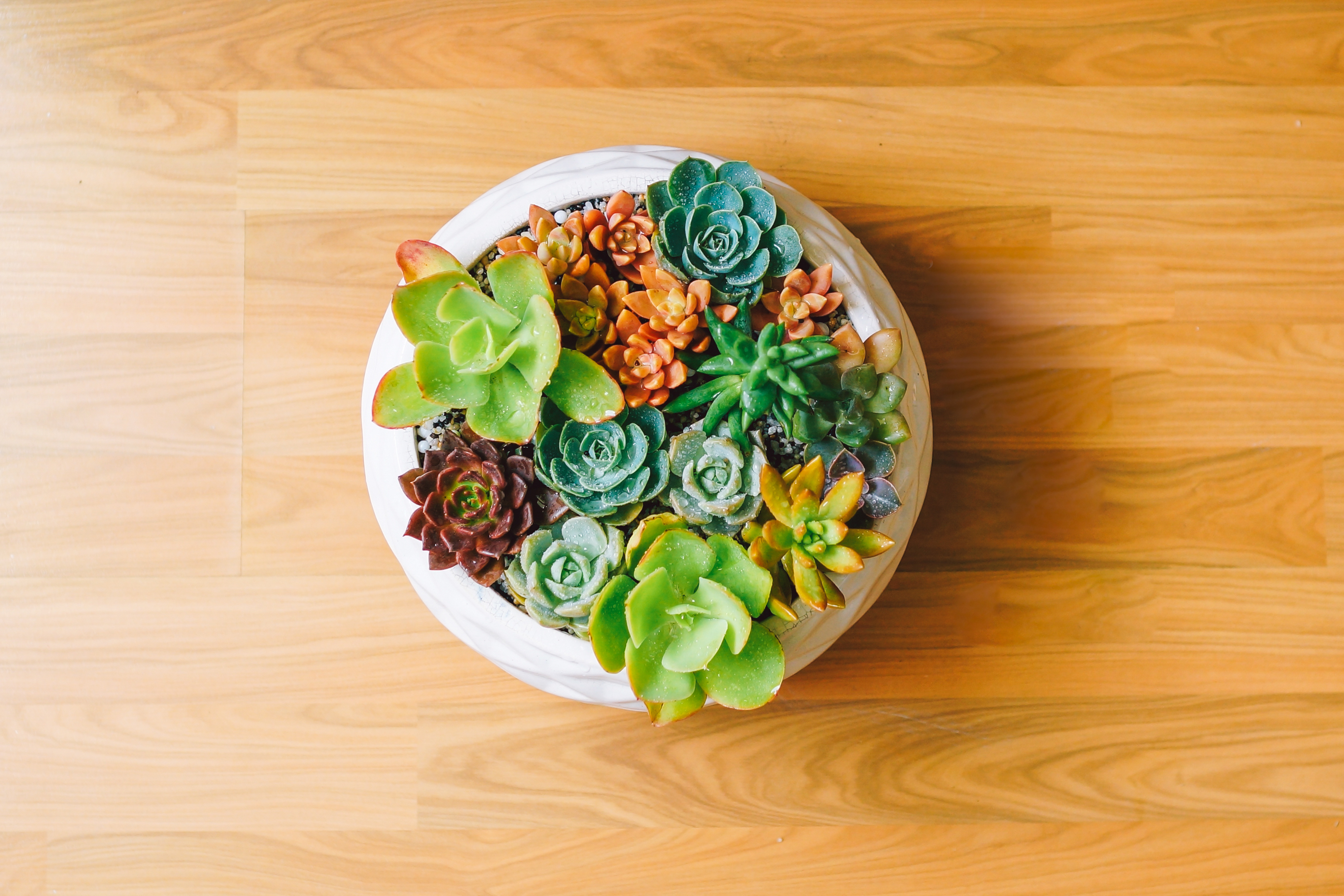How to care for succulents – help these popular house plants thrive
Learn how to care for succulents of all kinds with our expert guide


If your green thumb is lacking, you'll be pleased to know that learning how to care for succulents is a great way to build your confidence. As far as the best indoor plants go, succulents are not only on trend, they're one of the easiest varieties to care for.
'Succulents are a popular houseplant choice mainly because they don’t require as much maintenance as other plants on the market,' says Desmond Brosnan of Brosnan Landscape Gardening. 'In saying this, they do require some basic attention to keep them alive and thriving.'
Here's everything you need to know to ace your turn at this entry-level house plant.
How to care for succulents
'To look after a succulent, there are three key components to consider: light, water, and nutrition,' says James Mayo of Exubia, a biophilic design and planting company. The below tips cover all three areas, and will help you nail down a proper succulent care routine.
Succulents make wonderful bedroom plants, and if cared for properly will remain a healthy, attractive accessory in the room.
1. Expose succulents to enough light
When you bring your succulent home, the first step is to find it a proper spot with plenty of light.
'Succulents are a sun-seeking plant. They require around 800 foot candles of light to thrive and grow, for minimum maintenance 400 foot candles of light should be sufficient,' says Mayo. 'You can measure the amount of light your succulent receives by using any of the free smartphone apps available. Alternatively, you can simply put your succulent in the sunniest place possible.'
Design expertise in your inbox – from inspiring decorating ideas and beautiful celebrity homes to practical gardening advice and shopping round-ups.
As a general guideline, aim for 6-7 hours of light per day. A south- or east-facing windowsill should guarantee your succulent gets plenty of light. If you find yourself asking, 'why is my succulent dying?' then it may be down to the lack of direct sunlight. However, as Brosan explains, there is a fine line between too much and too little.
While it's not as common for a succulent to get too much light, it is possible. 'Be careful to not scorch the plant,' he cautions. 'If you see dark, burn like spots the plant is getting overexposed.'
2. Care for leaves
Since succulents need so much light, anything that gets in the way of light absorption can hinder its growth, including dirt and dust on its leaves.
'Even a thin layer of dust can prevent photosynthesis so it's important to dust your succulent frequently,' instructs Mayo.
To keep leaves clean, wipe them with a damp cloth, or give them a once-over with an old (clean) makeup brush or paint brush whenever they start to look dusty.
One no-no? Misting the leaves. It might seem like an easy way to clean the leaves while also hydrating the plant, but it's too much moisture for a succulent.
'Their fuzzy leaves tend to trap moisture which in turn causes rot,' Mayo says.
3. Choose the right soil
If you're abiding by all proper succulent care tips, and your succulents don't seem to be thriving, your soil could be to blame.
'The other essential factor when it comes to succulent care is your soil,' says Brosnan. 'For indoor plants you’ll need a well draining, aerated soil. The more air flow through the soil the better as this will encourage evaporation over actual drainage, you can add in some pumice to aid with air flow. Outdoor succulents are difference, they’ll need a pot with a drainage hole to allow moisture to escape which allows the roots to dry out between waterings like they need to.'
Ensuring proper drainage is also an important part of how to care for succulents in winter, since over-watering is a bigger concern in the colder months.
4. Get the watering right
Knowing when to water succulents is key to successful growing. Succulents are native to hot, arid climates, and their leaves are designed to hold water (see those thick, fleshy leaves?). This means overwatering is the fastest way to do them in. It's also one of the most common mistakes first-time succulent owners make and can be a reason that succulents turn yellow.
Explains Mayo, 'Succulents are one of the most drought-resistant plants and can go a length of time without water. To test if your succulent needs water, simply place your index finger knuckle deep into the soil. If your finger is dry when you pull it out - it's time to water your plant. If it's slightly moist then you can leave it for another day or two.'
5. Fertilize as needed
The final factor in succulent care is fertilizer. 'In terms of nutrition - we recommend using a fertilizer with an NPK ratio of 3-1-2 to optimize growth,' suggests Mayo.
NPK ratio is a measure of the makeup of the fertilizer, and the amount of nitrogen (element symbol N), phosphorus (P), and potassium (K). NPK is a standard measurement across fertilizers, and your local greenhouse or home improvement store should be able to show you suitable options.
Succulents don't need fertilizing often. Aim to fertilize once a year in the spring, right before the days start getting longer as this is the start of prime growth season for succulents. Other than that, fertilize as needed, but not more often than once every one-to-two months.
Do succulents need direct sunlight?
Succulents do best with plenty of direct sun, but not too much, either, as this can cause sunburn. You'll know if your plant is sunburned because it will develop small, brown spots.
On the other hand, it's also possible for succulents to get too little light.
'Succulents sport amazing colors and look their best when they’re exposed
to plenty of sunlight every day (6-8 hours of direct sunlight),' says Pol Bishop, a gardening specialist at Fantastic Gardeners. 'Of course, you can grow your succulents in the shade, but chances are their colors won’t be as lavish when compared to others that receive more sun.'
There are a few telltale signs that your succulents aren't getting enough sun. 'Growing your succulent in a shady spot also runs the risk of it becoming
lanky and developing a long stem with lots of space between its leaves,' says Bishop.
'This is a sign that it is trying its best to “reach” sunlight. If you don’t have anywhere sunny to place your succulents, you can always opt for artificial lights to supplement your plants with the right amount of light.'

Kaitlin Madden Armon is a writer and editor covering all things home. Her work has appeared in Real Homes, Architectural Digest, Martha Stewart Living, Refinery29, Modern Luxury Interiors, Wayfair, The Design Network, and lots more. She graduated from Northeastern University with a degree in journalism and currently lives in Connecticut with her husband, three kids, and black lab.